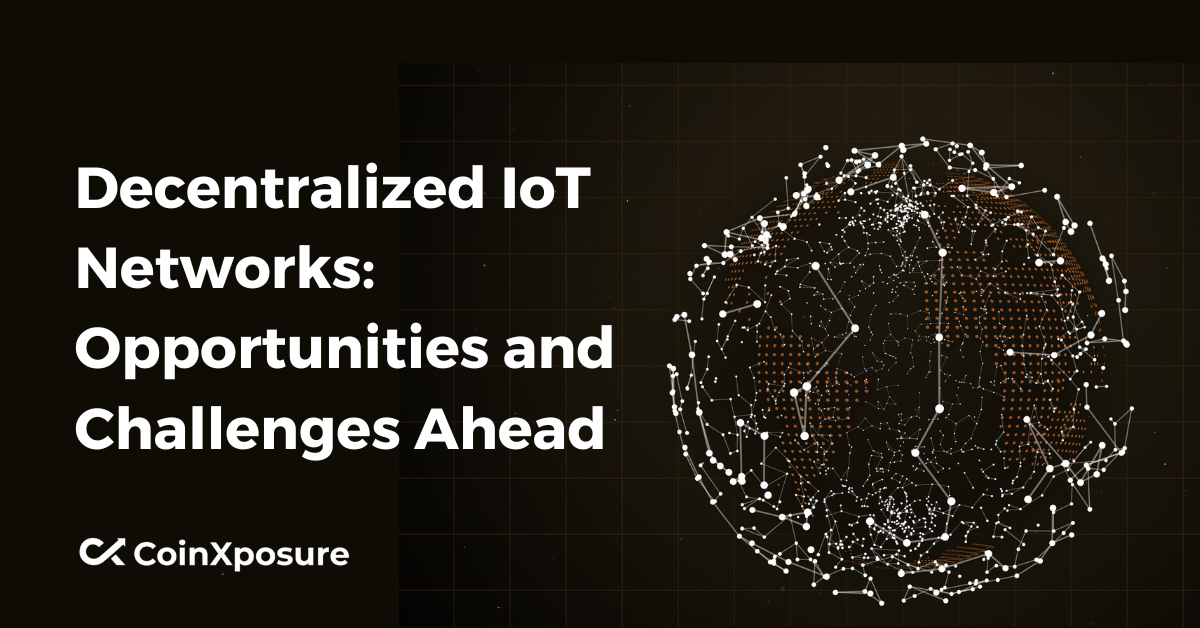
Decentralized IoT Networks – Opportunities and Challenges Ahead
The advent of Decentralized Internet of Things (IoT) Decentralized IoT Networks marks a paradigm shift in the landscape of connected devices. This innovative approach distributes data processing and control functions across the network, offering promising opportunities and presenting distinct challenges.
Enhanced security, scalability, and interoperability are key advantages, yet issues such as network reliability, governance mechanisms, and energy efficiency pose significant hurdles.
This article delves into the evolving realm of Decentralized IoT Networks, exploring the potential benefits and navigating the complex terrain of challenges that lie ahead.
Definition of Decentralized IoT Networks
Decentralized Internet of Things (IoT) Networks is a distributed and collaborative architecture for connecting and managing IoT devices.
In contrast to traditional, centralized models where a single authority or server controls the network, decentralized IoT networks distribute data processing, storage, and decision-making across multiple nodes or devices.
In a decentralized IoT network, each device, or “node,” plays a role in the overall functioning of the network, contributing to data processing and sharing responsibilities. This approach offers several advantages, including enhanced security, scalability, and improved resilience against single points of failure.
Additionally, decentralized IoT networks often leverage technologies such as blockchain to provide transparent and secure transaction processing and establish trust in a distributed environment.
Decentralized IoT networks aim to create a more flexible, efficient, and resilient infrastructure for the Internet of Things, where devices can communicate seamlessly, share data securely, and operate in a trustless environment without relying on a central authority.
Opportunities in Decentralized IoT Networks
Here are opportunities in decentralized IoT networks:
- Enhanced Security and Privacy
- Scalability
- Interoperability
Enhanced Security and Privacy
- Mitigation of central points of failure reduces the risk of widespread breaches.
- Empowers users with greater control over their data, addressing privacy concerns.
Scalability
- Distributed architecture facilitates seamless expansion without the limitations of a centralized system.
- Efficient resource utilization ensures scalability without compromising performance.
Interoperability
- Standardization across diverse devices and platforms fosters seamless communication.
- Improved protocols enable different IoT devices to interact seamlessly, promoting a cohesive ecosystem.
These opportunities collectively contribute to a more robust and adaptable IoT infrastructure, laying the foundation for a secure, scalable, and interconnected network of devices.
Challenges in Decentralized IoT Networks
Here are some challenges in decentralized IoT networks:
- Network Reliability
- Governance and Consensus Mechanisms
- Energy Efficiency
Network Reliability
- Ensuring connectivity in a distributed environment poses challenges, requiring robust solutions to maintain consistent device communication.
- Addressing potential latency issues becomes crucial to ensure real-time responsiveness.
Governance and Consensus Mechanisms
- Establishing trust in decentralized ecosystems demands effective governance structures.
- Selecting and implementing consensus protocols for decision-making poses challenges in achieving agreement among diverse nodes.
Energy Efficiency
- Power consumption considerations in decentralized devices become critical for sustainability.
- Striking a balance between performance and energy efficiency is essential to avoid resource depletion.
Navigating these challenges is pivotal for successfully implementing decentralized IoT networks, requiring innovative solutions and a thorough understanding of the intricacies involved.
Future Trends and Research Directions of Decentralized IoT Networks
Here are future trends and research directions of decentralized IoT networks:
- Integration of Blockchain Technology
- Edge Computing and Fog Computing
- AI and Machine Learning Integration
- Dynamic Network Orchestration
- Quantum Computing and Security
Integration of Blockchain Technology
- Exploring blockchain integration for enhanced security, immutability, and transparent transactions within decentralized IoT networks.
- Investigating potential challenges such as scalability and latency in combining blockchain with IoT.
Edge Computing and Fog Computing
- Leveraging edge and fog computing to enhance processing capabilities at the network’s periphery.
- Exploring the implications of decentralized IoT architectures with edge and fog computing for improved efficiency and reduced latency.
AI and Machine Learning Integration
- Investigating the role of artificial intelligence (AI) and machine learning (ML) in optimizing decision-making processes within decentralized IoT networks.
- Researching ways to distribute AI capabilities across the network for improved responsiveness.
Dynamic Network Orchestration
- Exploring dynamic orchestration mechanisms to adapt to changing network conditions and device configurations.
- Developing self-organizing systems that can autonomously adjust to optimize performance.
Quantum Computing and Security
- Assessing the potential impact of quantum computing on the security of decentralized IoT networks.
- Researching quantum-resistant cryptographic techniques to ensure long-term security.
Understanding and researching these trends will be pivotal in shaping the future of decentralized IoT networks, addressing emerging challenges, and unlocking new possibilities for connectivity and innovation.
Conclusion
Decentralized IoT Networks represent a transformative frontier in the evolution of interconnected devices. The opportunities presented, such as enhanced security, scalability, and interoperability, promise a resilient and adaptable IoT ecosystem.
However, navigating the challenges of network reliability, governance, and energy efficiency is imperative for successful implementation.
As we look to the future, trends like the integration of blockchain, edge computing, and the infusion of AI introduce exciting possibilities but also demand careful consideration. Dynamic network orchestration and quantum-resistant security measures will play crucial roles in shaping the resilience and longevity of decentralized IoT networks.
In this dynamic landscape, ongoing research and innovation will be essential to address emerging challenges and capitalize on evolving opportunities.
Decentralized IoT Networks hold the potential to redefine the way devices communicate and collaborate, fostering a more secure, scalable, and interconnected digital world. The journey ahead involves overcoming obstacles and embracing the continuous pursuit of advancements that will shape the next era of IoT evolution.
